The Eight Gates
of Seoul City Wall
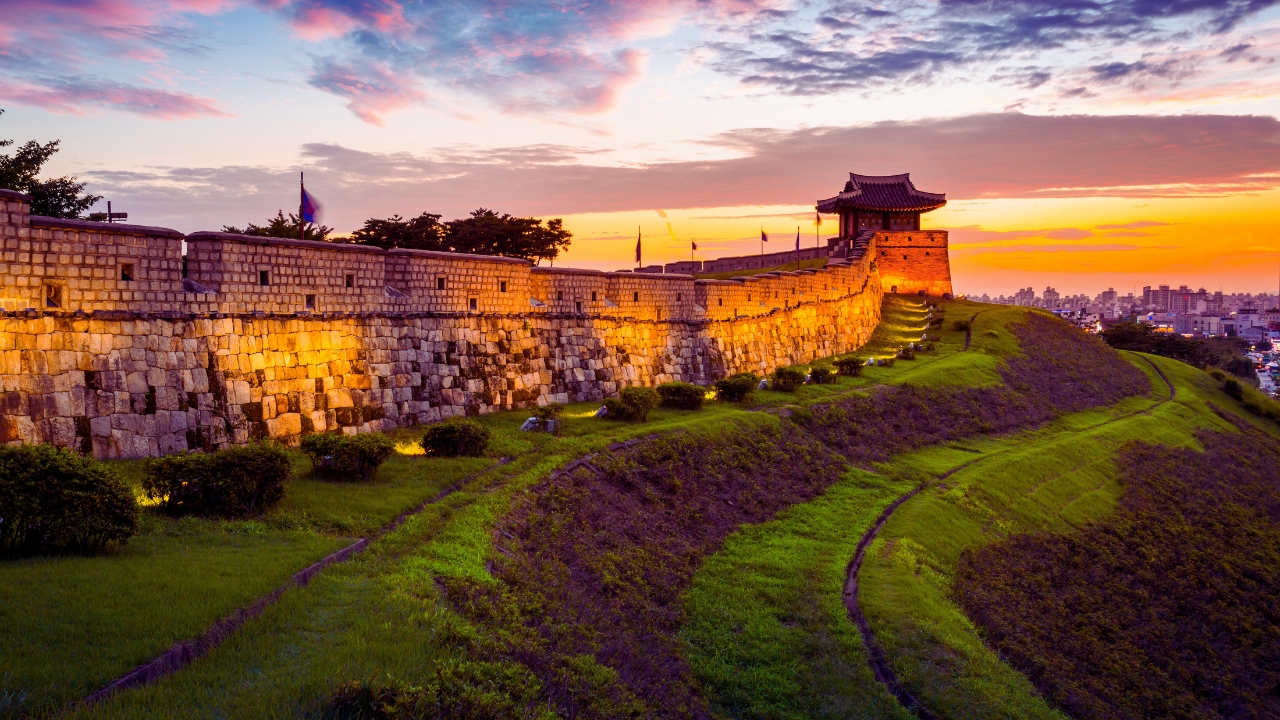 Eight Gates of Seoul City Wall
Eight Gates of Seoul City WallEight Gates of Seoul City Wall
Are you ready for an adventure? Let's journey to the heart of Seoul, South Korea, where we'll discover the historic Eight Gates of Seoul.
These magnificent gateways are like portals to the past, taking us back in time to an era of kings, warriors, and grand architecture.
Join me as we explore each gate's unique features and delve into their rich history and cultural significance.
Get ready to be captivated by the beauty and grandeur of the Eight Gates of Seoul!
Namdaemun
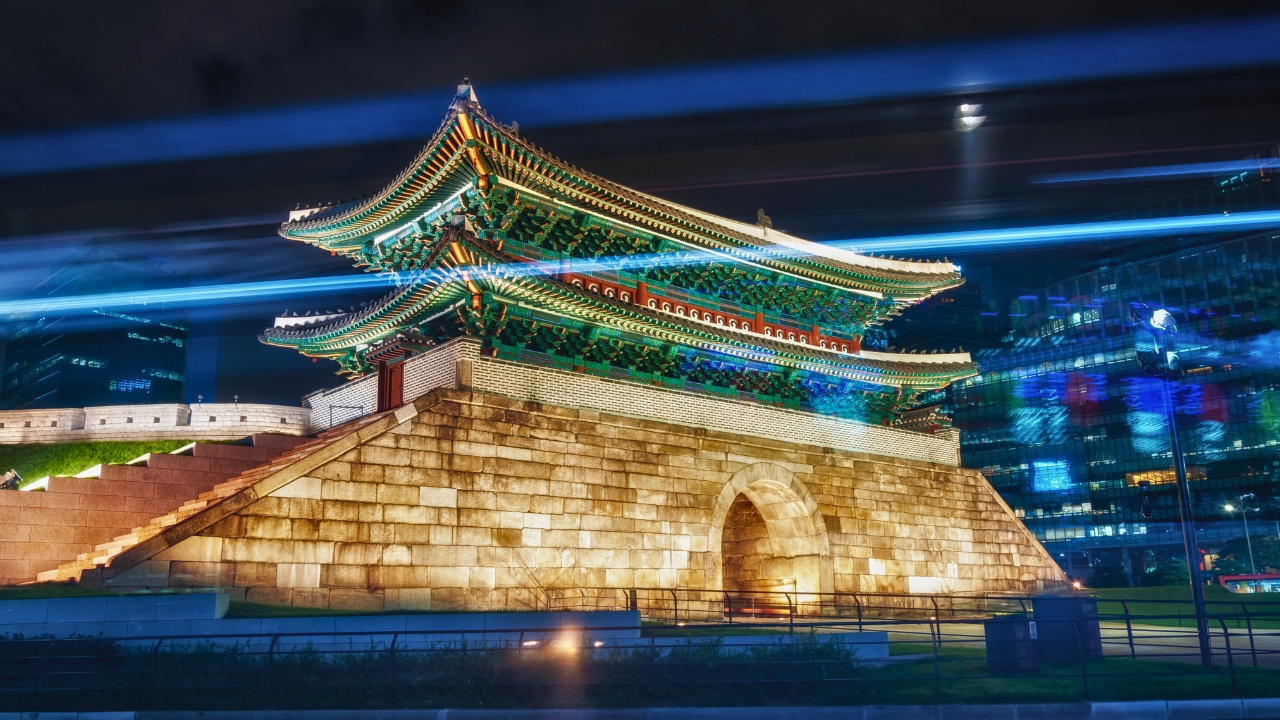 Eight Gates of Seoul City Wall - Namdaemun Gate
Eight Gates of Seoul City Wall - Namdaemun Gate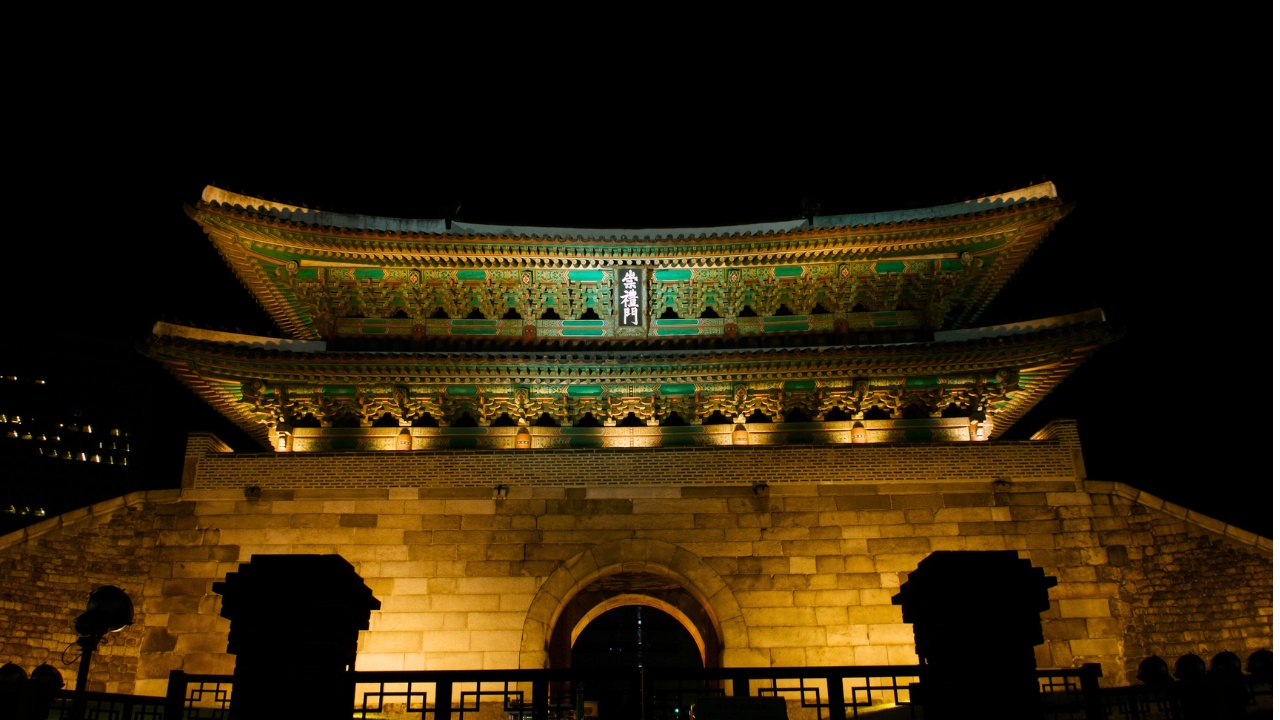
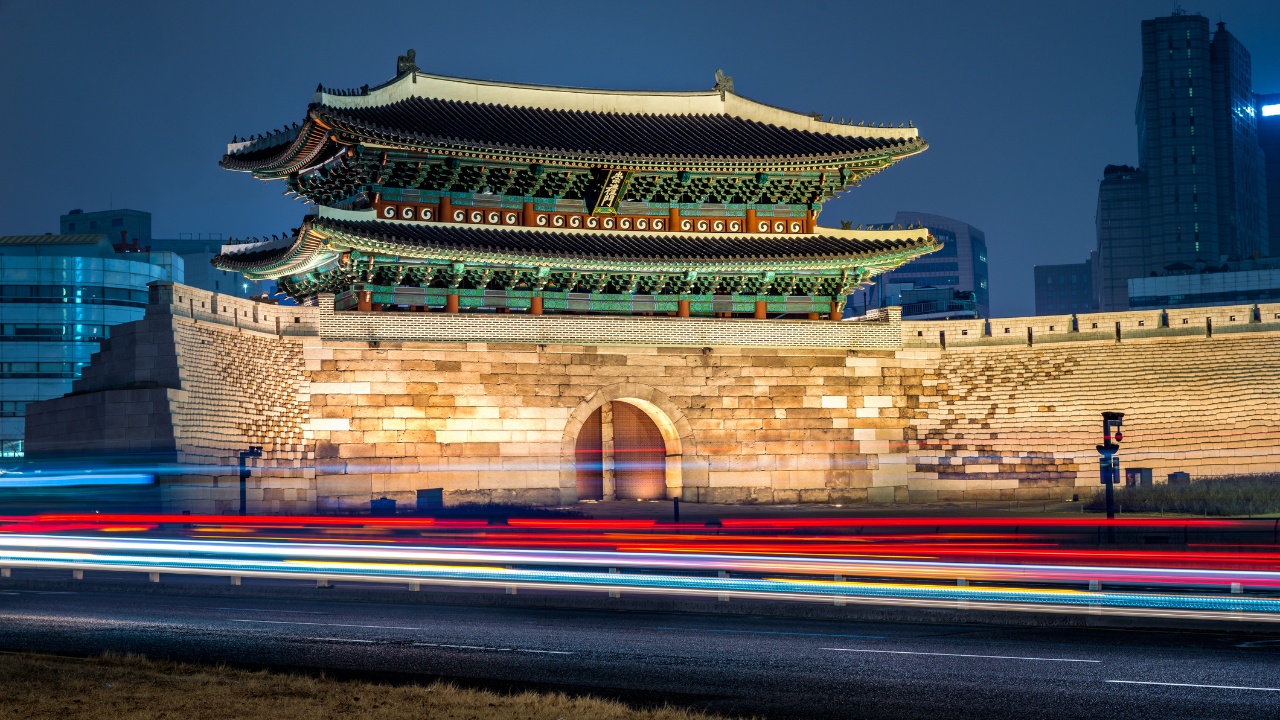
Sungnyemun Gate (숭례문) - Namdaemun: Sungnyemun Gate, also known as Namdaemun Gate, is one of the most beloved landmarks of South Korea.
Located in the heart of Seoul, it is the main southern gate of the city and has a rich history that dates back to 1398.
The gate was initially built during the Joseon dynasty and served as the main entrance to the city, welcoming both locals and visitors from all over the world.
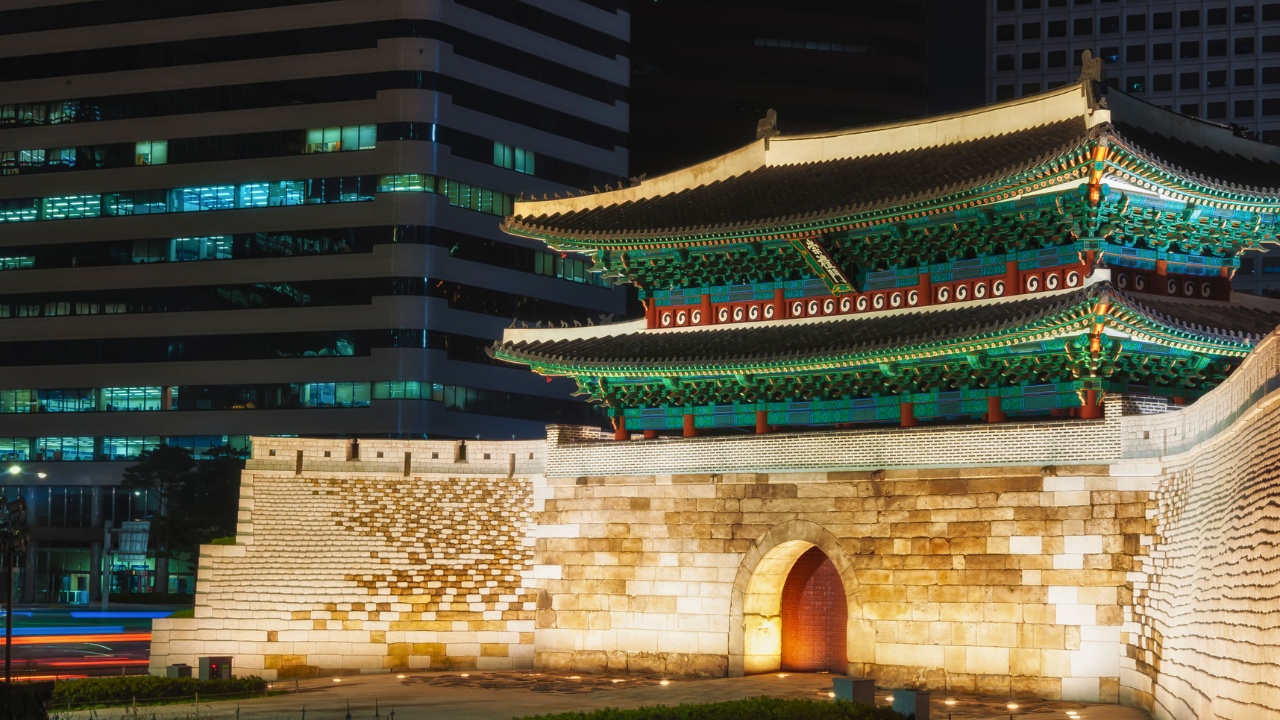 Eight Gates of Seoul City Wall - Namdaemun Gate in the evening
Eight Gates of Seoul City Wall - Namdaemun Gate in the eveningThe architecture of Sungnyemun Gate is truly iconic. It features a large wooden gate supported by a stone base adorned with intricate designs and patterns that reflect Korea's rich cultural heritage.
The gate is a true masterpiece of architectural design and is considered one of Asia's most beautiful and impressive gates.
Unfortunately, in 2008, Sungnyemun Gate was severely damaged by fire.
The restoration process was long and arduous, but the gate has been restored to its former glory thanks to the hard work and dedication of countless architects, engineers, and preservationists.
Today, Sungnyemun Gate testifies the resilience and perseverance of the Korean people and serves as a symbol of hope and inspiration for future generations.
Dongdaemun
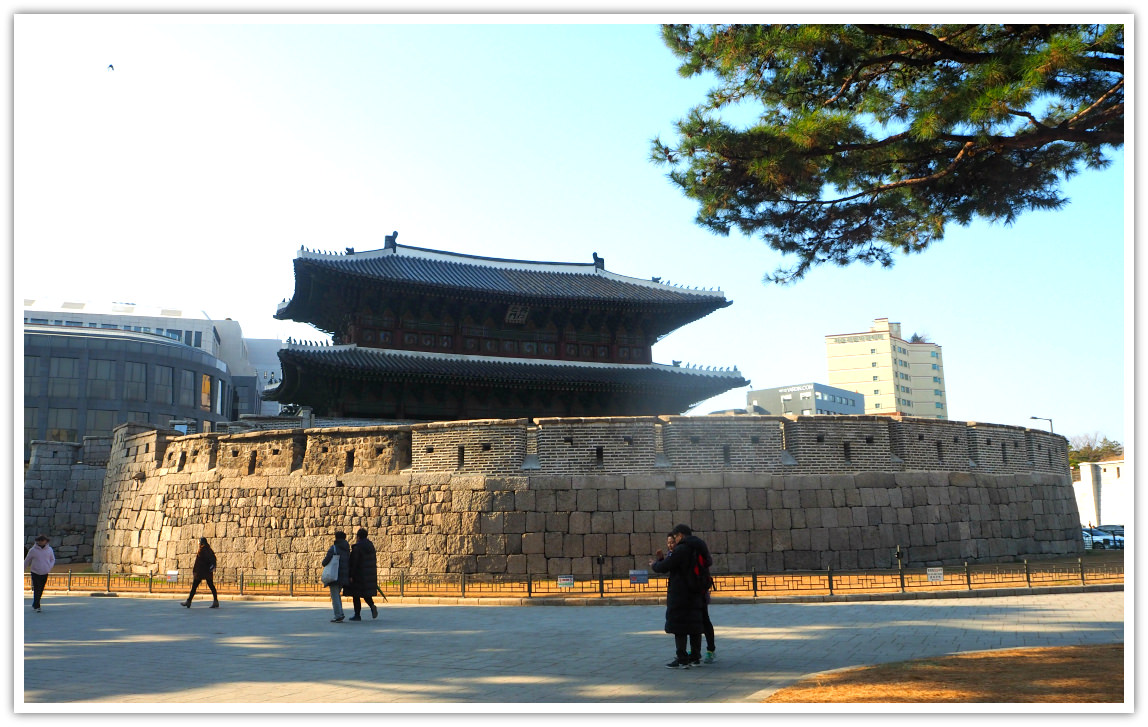 Eight Gates of Seoul City Wall - Dongdaemun Gate
Eight Gates of Seoul City Wall - Dongdaemun Gate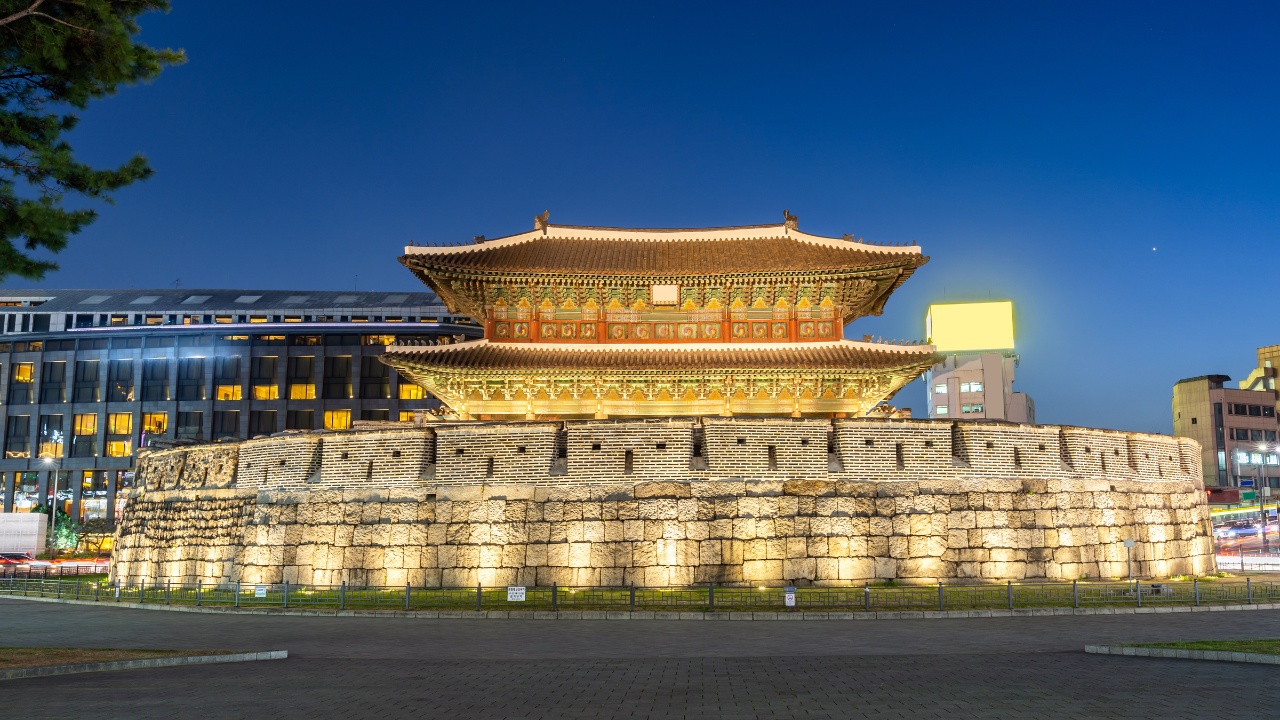 Dongdaemun Gate
Dongdaemun Gate Frontal sideview of Dongdaemun Gate in Seoul
Frontal sideview of Dongdaemun Gate in SeoulHeunginjimun Gate (흥인지문) - Dongdaemun: The gate that stands tall and proud in the city's eastern part is commonly referred to as Dongdaemun.
With its construction dating back to 1398, this gate has been a critical element in the city's defense system for centuries.
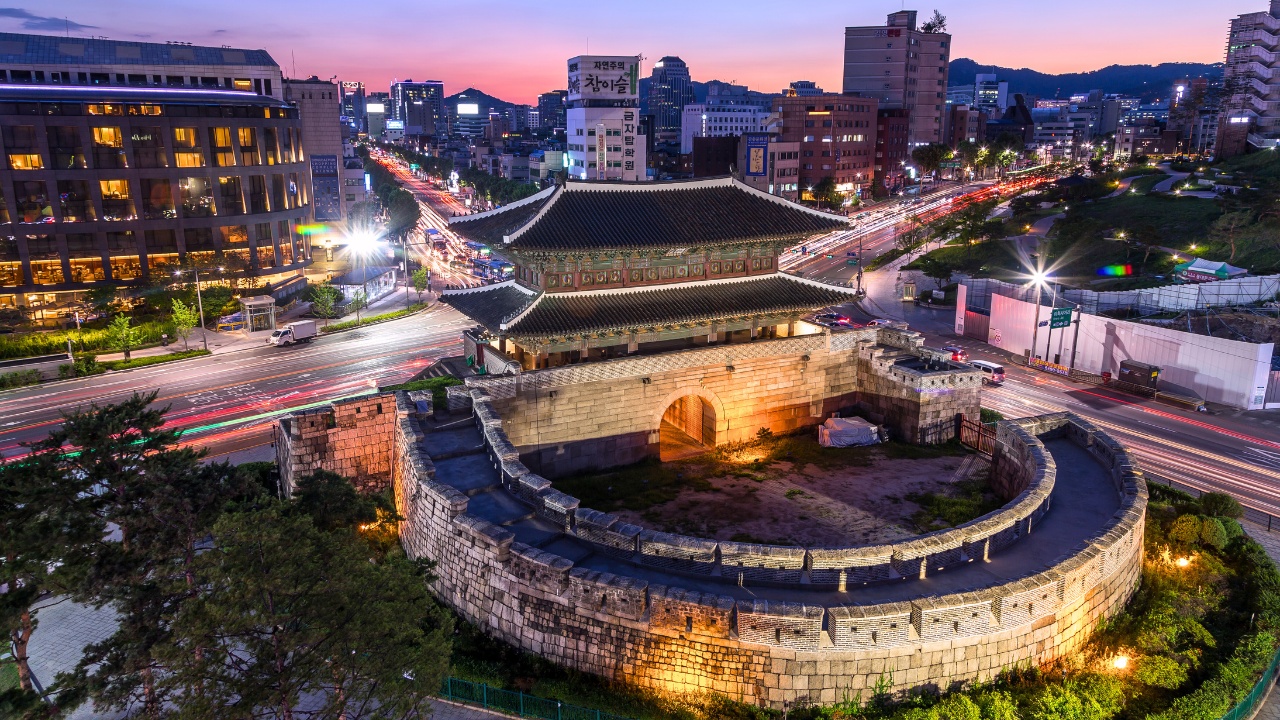 Eight Gates of Seoul City Wall - Dongdaemun Gate Aerial View
Eight Gates of Seoul City Wall - Dongdaemun Gate Aerial ViewThe area surrounding the gate is a feast for the senses, with its vibrant and lively atmosphere that never seems to rest.
The district boasts a bustling shopping scene, with an array of shops, markets, and malls that cater to all tastes and budgets.
The night comes alive with the area's exciting nightlife scene, offering visitors and locals alike a variety of choices for entertainment and relaxation.
Today, Dongdaemun Gate remains a cultural and historical gem, attracting visitors from all over the world. It has undergone several renovations and upkeep to preserve its original design, ensuring it remains a timeless masterpiece for generations.
The surrounding area offers visitors a chance to experience the culture and vibrancy of the city, with endless activities and events to choose from.
Souimun Gate
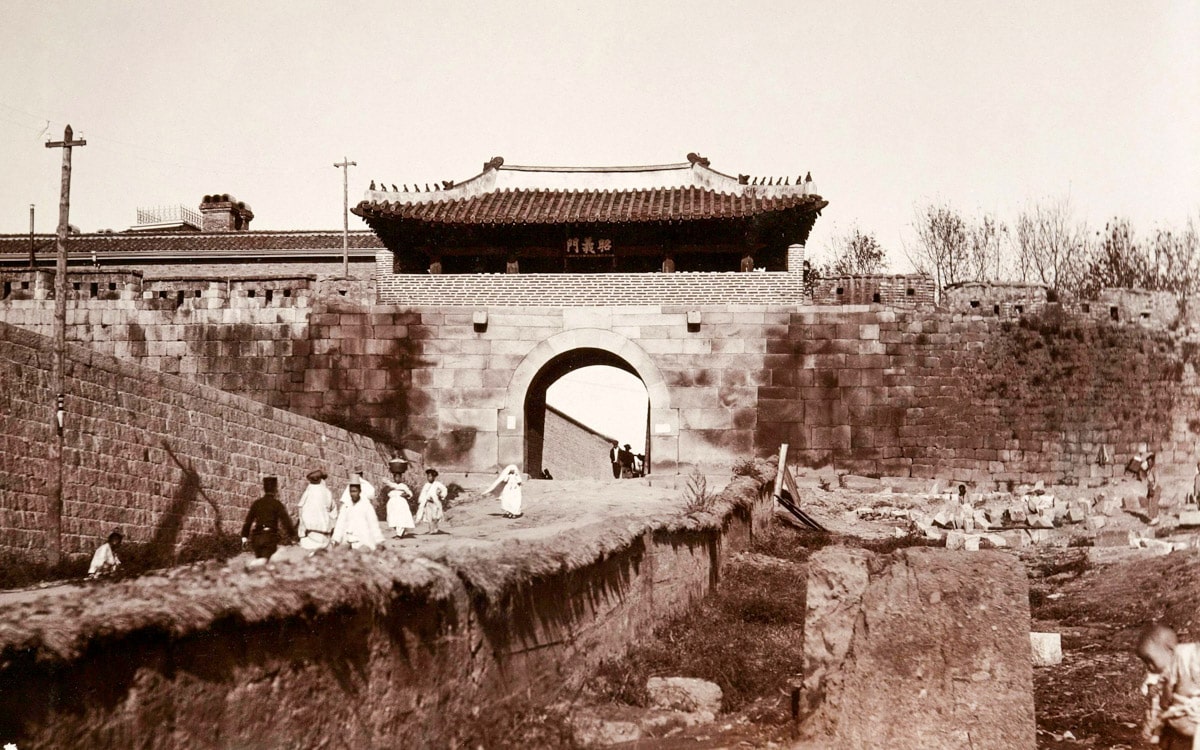 Eight Gates of Seoul City Wall - Souimun Gate (1396-1914)
Eight Gates of Seoul City Wall - Souimun Gate (1396-1914)Souimun Gate (소의문): Souimun Gate, also known as the West Small Gate, was a significant entrance to the western regions of Seoul, South Korea.
It was built in 1396 during the Joseon Dynasty and served as a crucial gateway for trade and commerce in the area.
The gate was an essential part of the city's infrastructure, and its location made it a vital point of defense against potential invaders.
Souimun was one of the Four Secondary Gates of the Seoul City Wall. It stood until 1914, when the Japanese colonial authority demolished it.
Although the gate no longer stands, its historical significance remains. Souimun Gate was vital to the city's development and symbolized Seoul's rich cultural heritage.
Visitors can still see remnants of the gate's foundation and learn about its history at nearby museums and cultural centers. Despite the passage of time, Souimun Gate remains an essential part of Seoul's identity and serves as a reminder of the city's past.
Donuimun Gate
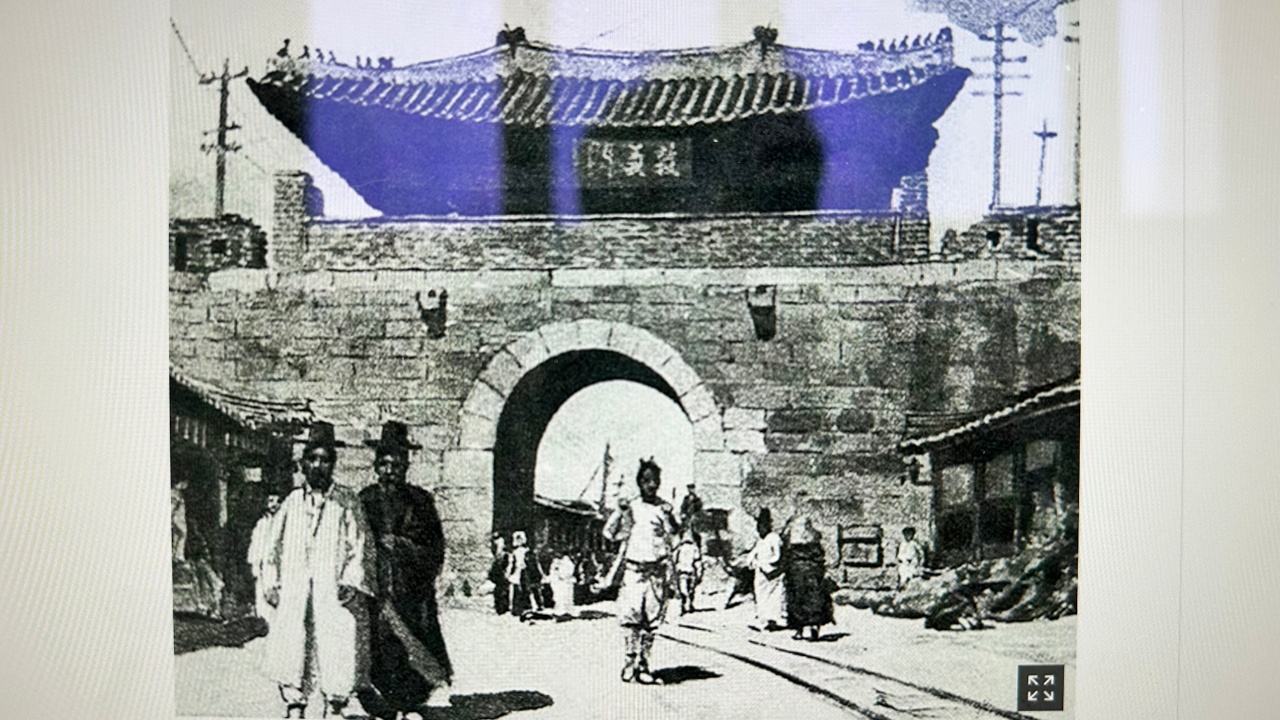 Eight Gates of Seoul City Wall - Donuimun Gate (1396-1915)
Eight Gates of Seoul City Wall - Donuimun Gate (1396-1915)Donuimun Gate (돈의문): Donuimun Gate was one of the four major gates of the old city wall that surrounded Seoul during the Joseon dynasty.
Situated on the city's northwest side, it facilitated movement toward the northwest. The gate was originally built in 1396, during the reign of King Taejo, the first king of the Joseon dynasty.
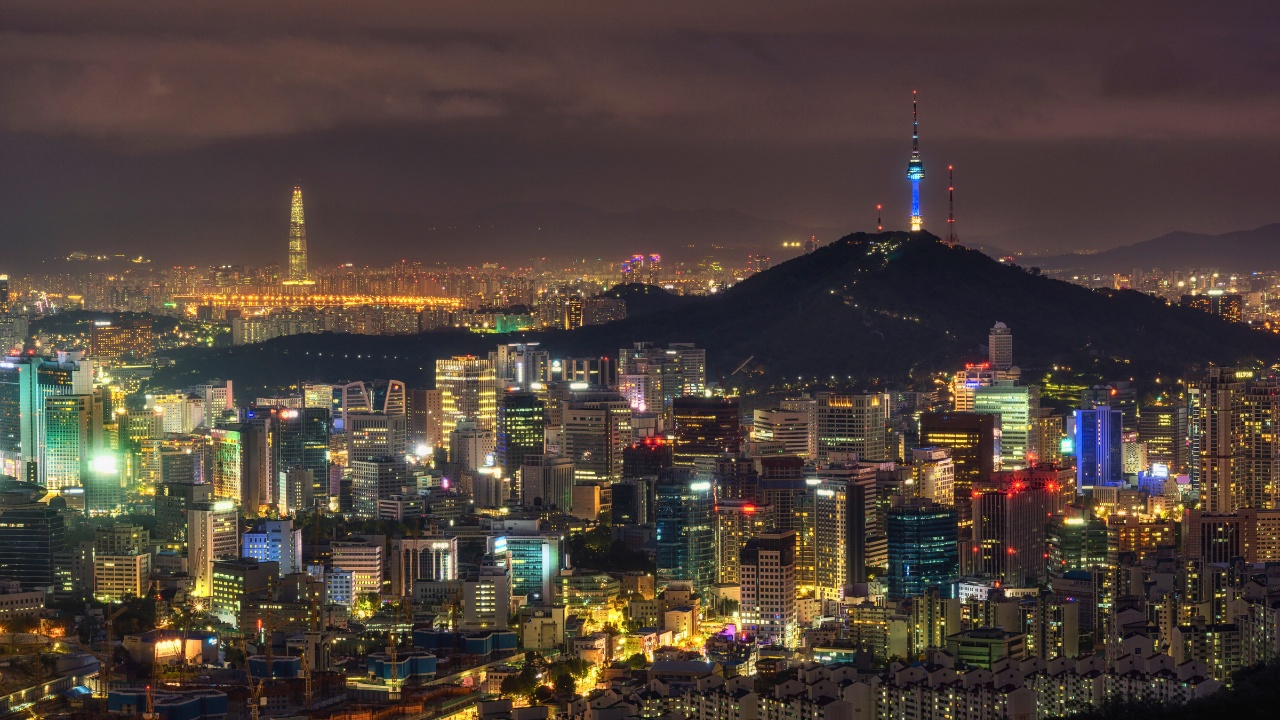 Sodaemun District, where Donuimun Gate once stood
Sodaemun District, where Donuimun Gate once stoodDonuimun Gate was an essential symbol of the city's political and cultural identity. It was also a vital transportation hub, serving as a gateway to other parts of the country.
Sadly, it was dismantled in 1915 during the Japanese colonial period, and only the foundation stones remain today. However, efforts are being made to restore the gate to its former glory.
Changuimun Gate
Changuimun Gate (창의문): Changuimun Gate is one of the four major gates of the old city wall that surrounded Seoul during the Joseon dynasty.
Positioned on the northern side of the city, it provided access to the regions of the north.
Changuimun Gate was also built in 1396 during the reign of King Taejo, and it is the only gate that still stands today.
It offers picturesque views of the surrounding mountains and is a popular tourist destination. The gate has undergone several renovations over the years and currently stands as a beautiful and historic landmark.
Sukjeongmun Gate
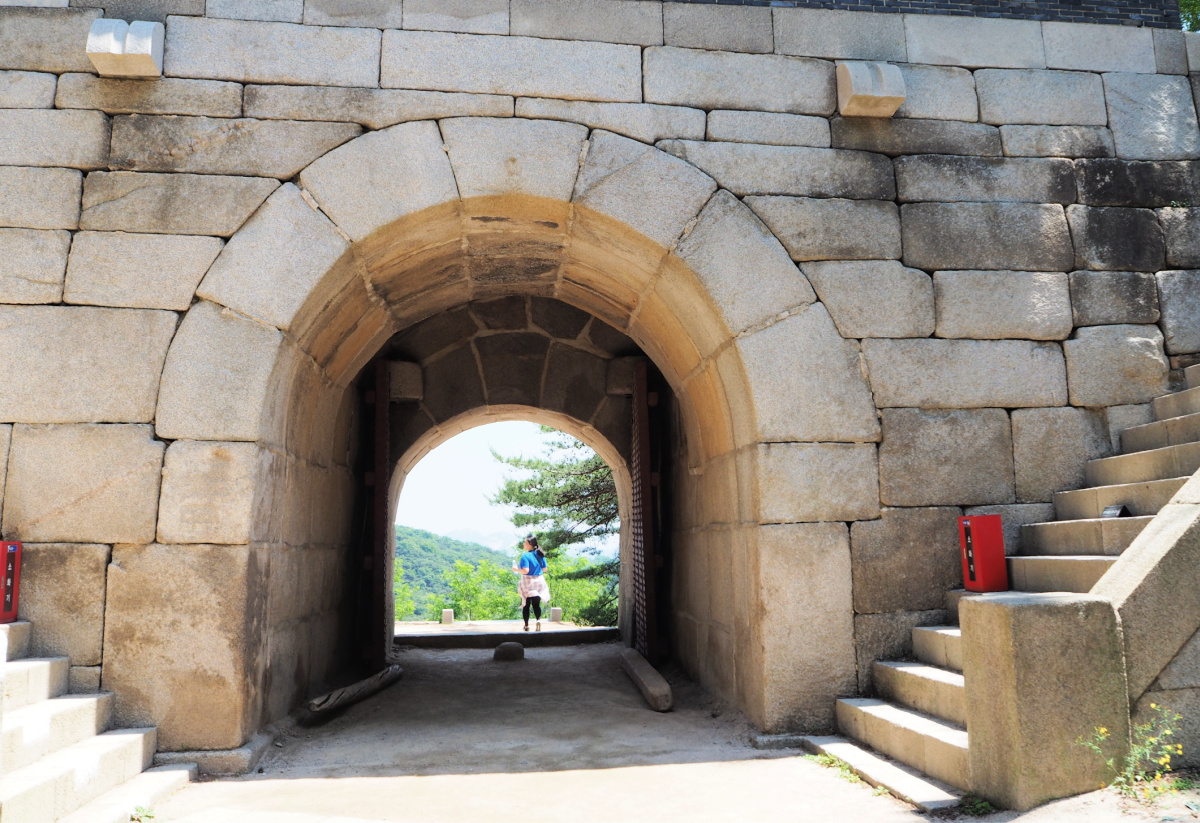 Eight Gates of Seoul City Wall - Sukjeongmun Gate in Bugaksan Mountain
Eight Gates of Seoul City Wall - Sukjeongmun Gate in Bugaksan MountainSukjeongmun Gate (숙정문): Sukjeongmun Gate is another of the four major gates of the old city wall that surrounded Seoul during the Joseon dynasty.
It is located on the northeastern side of Seoul and was built in 1396 during the reign of King Taejo.
The gate allowed passage to the northeast and was an important entry point for trade and commerce.
Over time, the gate fell into disrepair and was eventually dismantled. However, it was restored in recent years and now stands as a testament to history and a reminder of Seoul's rich cultural heritage.
Today, visitors can admire the intricate details of the gate and learn about its historical significance.
Hyehwamun Gate
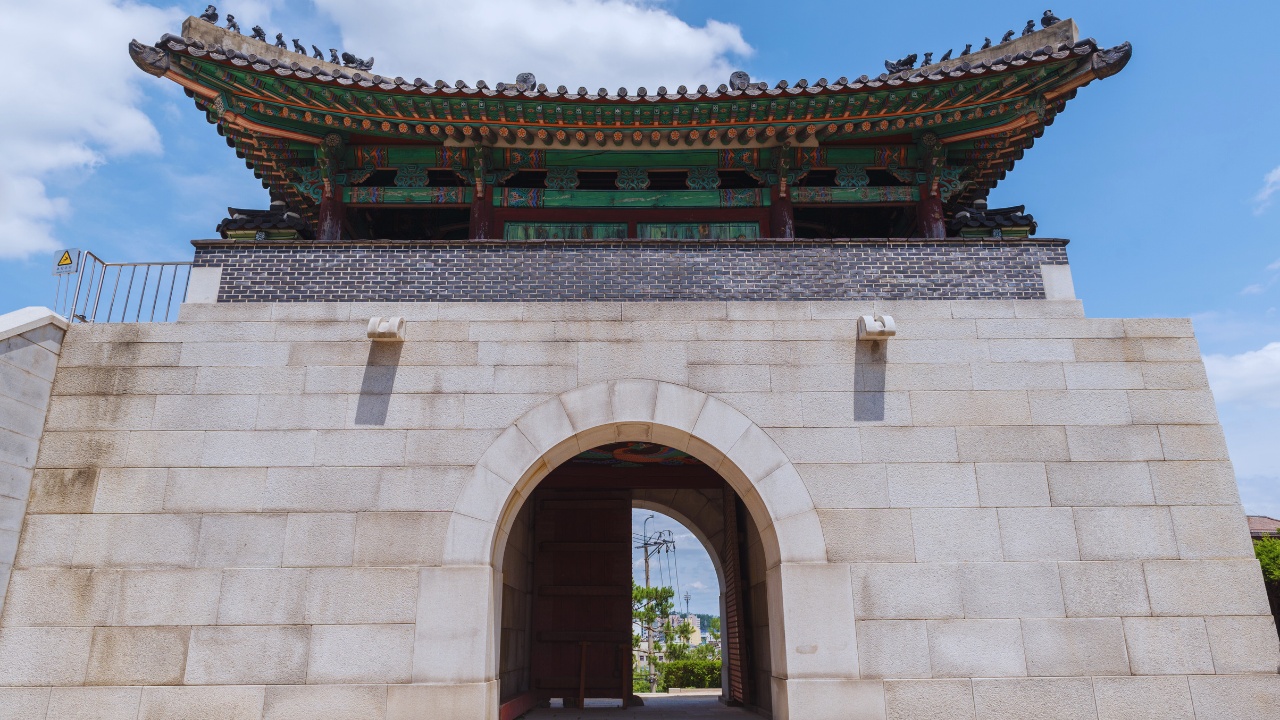 Eight Gates of Seoul City Wall - Hyehwamun Gate
Eight Gates of Seoul City Wall - Hyehwamun GateHyehwamun Gate (혜화문): The Hyehwamun Gate, also known as the Gate of Enlightenment, is a historic structure on the eastern side of the city.
It was originally constructed in 1396 during the Joseon Dynasty and served as a vital passageway for travelers to the east.
The gate has undergone several restorations, the most recent in 2006.
The restoration efforts aimed to showcase its original beauty, and it now stands as a testament to South Korea's architectural and cultural heritage.
Visitors can admire the gate's intricate details, including the wooden brackets, stone pillars, and roof tiles that form the structure.
The gate is a popular tourist attraction, and its location near several other historic landmarks makes it a must-see destination for anyone interested in Seoul's rich history and culture.
Gwanghuimun Gate
Gwanghuimun Gate (광희문): The Gwanghuimun Gate, also known as the Gwanghee Gate, is historically located in the southeastern side of Seoul, South Korea.
Its construction dates back to 1396 during the Joseon Dynasty, and it served as a significant access point to the city's southeast.
The gate was part of the fortress wall surrounding Seoul, which ran about 18.6 kilometers.
Although the Gwanghuimun Gate no longer stands today, its historical legacy endures and has been designated as South Korea's Treasure No. 1-1.
The Seoul City Wall and these gates offer a unique blend of history, architecture, and scenic walks. You can explore this ancient fortification while enjoying breathtaking views of the city and its natural surroundings. 🏯
Each of Seoul's eight gates has a captivating history. However, if I were to choose one with particularly intriguing tales, it would be Namdaemun (also known as Sungnyemun).
Namdaemun, also known as Sungnyemun, is a cultural and historical treasure of South Korea.
This magnificent gate was constructed in 1398, during the early Joseon dynasty, and served as the main southern entrance to Seoul. It was symbolic, representing the grandeur and resilience of the city.
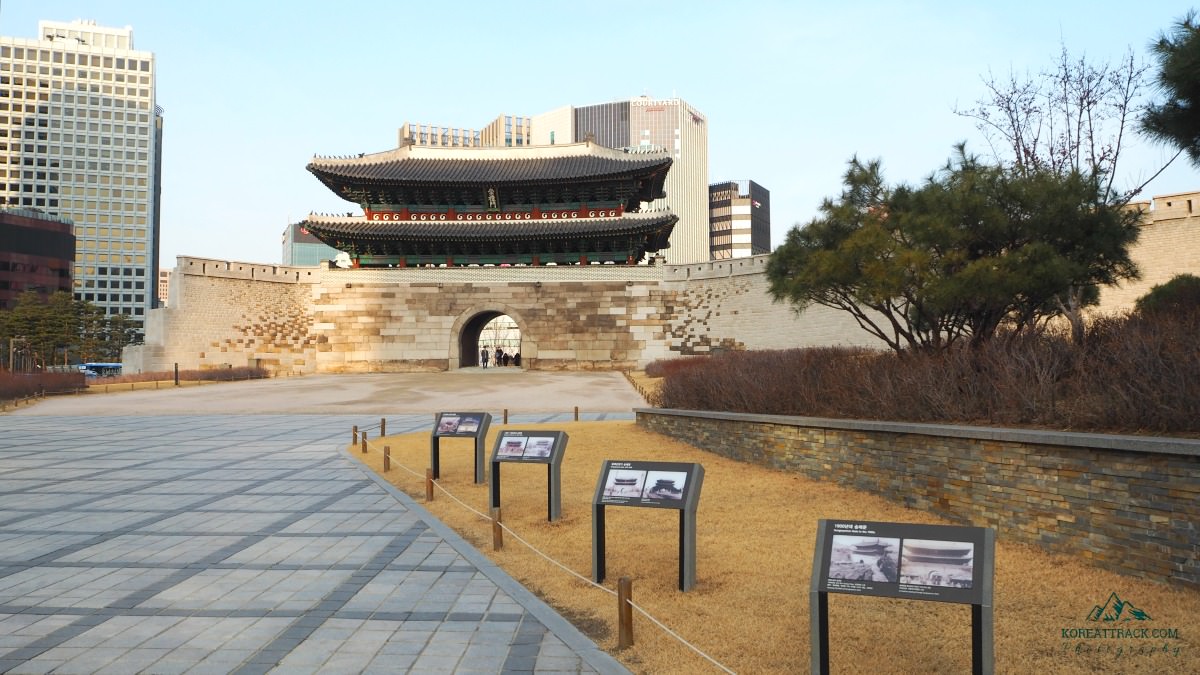 Eight Gates of Seoul City Wall - Namdaemun Gate
Eight Gates of Seoul City Wall - Namdaemun GateNamdaemun has witnessed several historical events that have shaped South Korea's history. During the Imjin War (1592-1598), the gate suffered severe damage from Japanese invasions but was later restored.
In 2008, a devastating fire engulfed Namdaemun, leaving it in ruins. However, extensive restoration efforts brought it back to life, a testament to the nation's enduring spirit.
Namdaemun is a National Treasure and an impressive example of traditional Korean architecture.
Its wooden structure, intricate design, and imposing presence make it a remarkable sight and a reminder of the country's rich cultural heritage.
Today, Namdaemun is a cherished landmark, connecting Seoul's past and present and welcoming visitors worldwide to marvel at its beauty and historical significance. 🏯
More Informational Links:
- https://english.visitseoul.net/attractions/Seoul-City-Wall/
- https://en.wikipedia.org/wiki/The_Eight_Gates_of_Seoul
- Home
- Historical Attractions
- Eight Gates of Seoul City Wall
Get Exciting Activities
Book one of our exciting activities today to experience the thrill of a lifetime! Take advantage of this opportunity and secure your spot in advance.
Hotel Map Guide
Find your affordable, accessible, and comfortable hotel in Seoul at Agoda.Com. See the hotel map below...
Hotel Booking Guide
Find affordable and amazing hotels on Agoda.com using the search box below. Book now to enjoy great discounts and save!
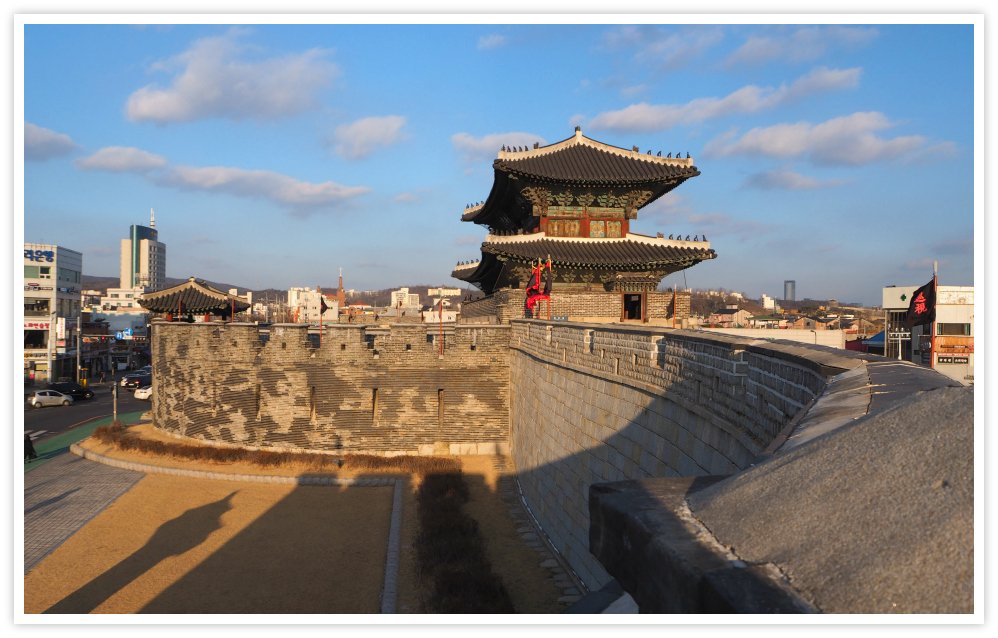
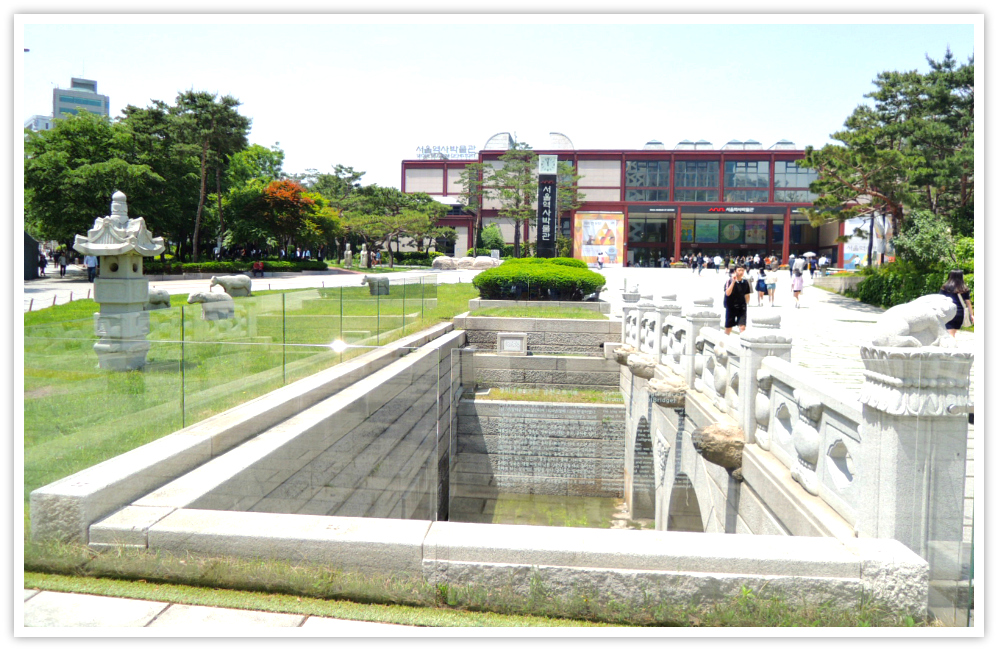
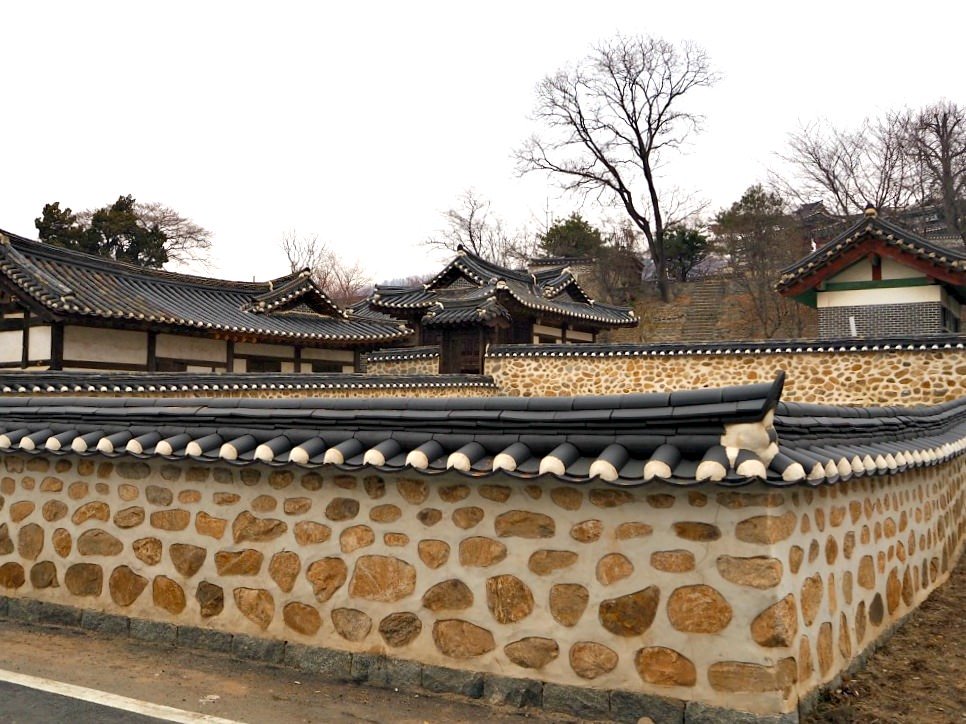




New! Comments
What do you think about this page? Leave me a comment in the box below.